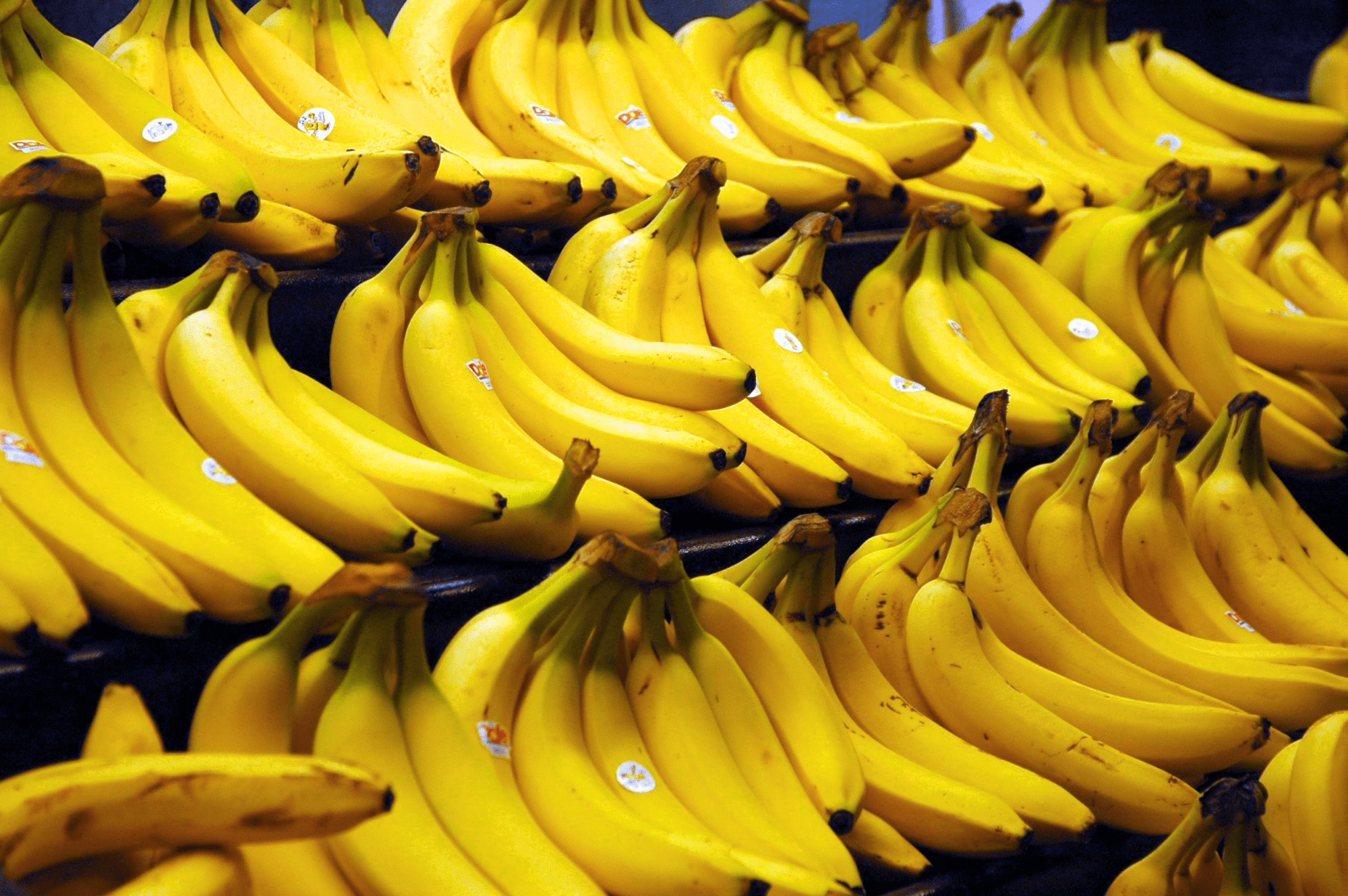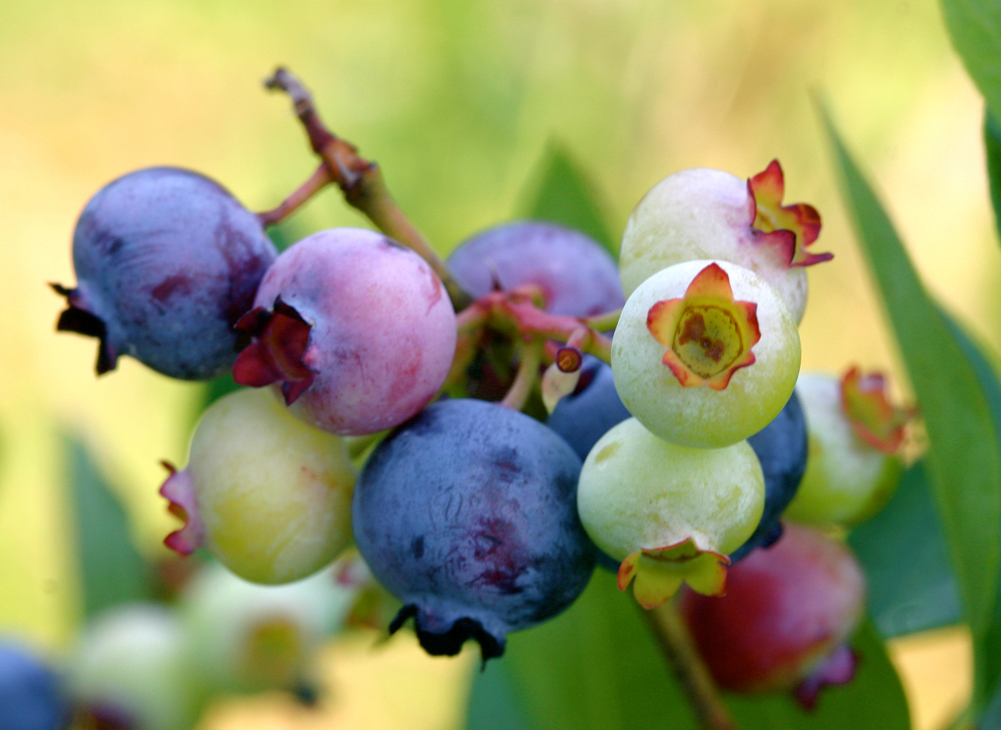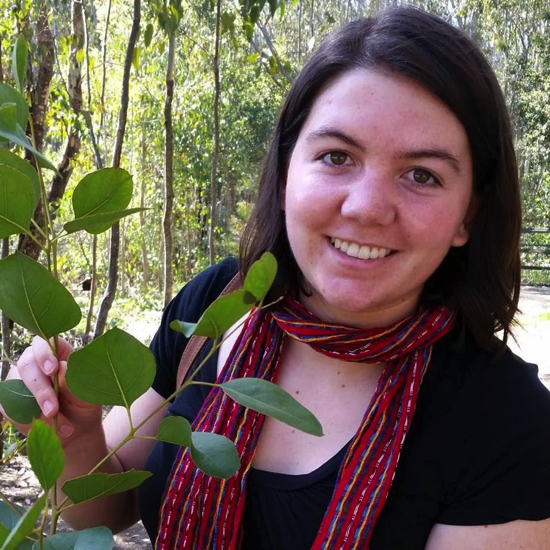Anyone who knows me knows my love for blueberries. Besides being a nutrient-packed super fruit, blueberries are also a major agricultural commodity for Georgia. Our state recently beat out Michigan to become number 1 in blueberry production in the nation. Because of this, I decided to take a part time job helping an ongoing study in blueberries with two horticulture professors at UGA, and I wanted to share a little about blueberries and our project. The project involves studying how synthetic plant hormones affect ripening in blueberries, based on a lot of similar past research in other, related fruits.
To talk about blueberries, we first have to talk about fruit and ripening. Fruits are broken down into groups based on how they ripen, and these are called climacteric and non-climacteric. Climacteric fruits ripen in response to a spike in ethylene, a common plant hormone.
Ethylene spikes when the fruit nears its complete size, causing fruits to ripen and develop the sweetness, flavor, and texture we associate with them. This hormone peak is also associated with an increase in respiration, turning sugars (glucose) into energy, which releases carbon dioxide, which is exactly what you see in the fruit.

The figure to the right shows just this in a fruit like bananas (which is picked before ripening can occur). The red line shows carbon dioxide (and therefore respiration) increasing slowly at first and then rapidly increasing around the 7-8 day period, the same time that ethylene, represented in green, has a rapid and short burst of production within the fruit.
Scientists have known about ethylene and its effect on plants for a while now, and many growers are able to use a gaseous, synthetic form of ethylene, called ethephon, to induce ripening in some common produce. For example, bananas are a climacteric fruit that are

shipped around the world affordably due to synthetic ethylene and ripening chambers. Banana growers pack, pick, and ship the green fruit to the United States. When the green bananas enter the country, specialized companies place the bananas in ethylene chambers to ripen before being sold at grocery stores.
Unlike climacteric fruits, non-climacteric fruits do not have the ethylene peak that signals them to ripen. Less is known about how these fruits ripen, but it is possible that other hormones, such as Abscisic Acid, also have a peak during the ripening process that causes these fruits to develop the sugar, acid, and texture that makes them so delicious. These fruits include grapes, oranges, and pineapple.
One of the other difficulties that comes with fruits such as grapes is that the fruit does not always ripen all at the same time. Unlike climacteric fruits such as bananas and tomatoes which can be picked green and then ripened later, non-climacteric fruits like grapes will not develop the same sugar, acid, and texture after picking, even when subjected to plant hormones, and so these fruits would be sour and inedible if picked early.
Scientists debate as to which group of fruits blueberries falls into. Blueberries appear to respond somewhat to ethylene but cannot be ripened post-harvest the way that tomatoes or bananas can. Furthermore, just like grapes, blueberries ripen over a large window, requiring high labor costs to hand pick them.
And yes, fresh market blueberries are indeed handpicked. While some machines exist to pick blueberries, they are not very accurate, and these berries are typically sent to packing houses to be frozen for your smoothies.
What if blueberries could ripen within a shorter window? Or possibly even ripen earlier in the season? The first berries of the season earn a much higher at market price because people like me are desperate for the first taste of summer, and farmers could earn a lot more money if they could get their berries to market a few days earlier.

The ongoing project at UGA looks at understanding what causes blueberries to ripen and if we can use that knowledge to improve blueberry harvesting practices. Blueberries were sprayed with different synthetic plant hormones to see if they could cause the fruits to ripen earlier and in a smaller window. While this study will be continuing for a few more years, some research in grapes has already shown promising results with some cultivars (cultivated varieties).
Because so little is known about how blueberries ripen, the study also goes on to do a test called RNA-sequencing on the berries after spraying. RNA is a copy of your DNA that is taken out of the nucleus (where the DNA is kept) to then be read and transcribed into a protein. You can think of RNA kind of like a journalist. The journalist goes into the field, say at a protest, getting the raw information (the DNA) from the field. The journalist (the RNA) then converts this raw information into a journal article (protein) for someone (cells) to read and use.
In the blueberry, it is the RNA that ultimately controls when the fruit starts producing sugar and how much it produces in total. By taking all of the RNA in one blueberry that has not been sprayed and all of the RNA in another blueberry after it has been sprayed, the scientists can compare the two RNA sets. A lot of the RNA amounts will be the same, but there will be some sections of RNA that have a lot more (or a lot fewer) copies than the control (the unsprayed blueberry).
This fits back into our analogy from above. If you went somewhere and noticed that a lot of journalists were hanging around one area (more copies of one segment of RNA from one particular region of DNA), you might assume that something newsworthy was happening there. By further studying those different RNA segments, you are essentially understanding what DNA is being used most frequently during certain stages of ripening, and the genes associated with that DNA are probably important in ripening.
It's a long process that will involve many more projects and research down the line, but the more we know about blueberries, the more successfully and cheaper we can produce them. And on a graduate student salary, I would not mind seeing a cheaper berry hit the market.
 Laura Kraft is a Georgia native, having grown up in Alpharetta, Georgia. She is a joint Bachelor's/Master's student studying aphid endosymbionts under Dr. Kerry Oliver, looking for a PhD program outside the southeast to move to. When not in lab, you'll find her at one of a couple Spanish conversation tables around Athens or improving her amateur photography skills. More from Laura Kraft. Laura Kraft is a Georgia native, having grown up in Alpharetta, Georgia. She is a joint Bachelor's/Master's student studying aphid endosymbionts under Dr. Kerry Oliver, looking for a PhD program outside the southeast to move to. When not in lab, you'll find her at one of a couple Spanish conversation tables around Athens or improving her amateur photography skills. More from Laura Kraft. |
About the Author
- athenssciencecafehttps://athensscienceobserver.com/author/athenssciencecafe/April 17, 2020
- athenssciencecafehttps://athensscienceobserver.com/author/athenssciencecafe/April 12, 2020
- athenssciencecafehttps://athensscienceobserver.com/author/athenssciencecafe/April 3, 2020
- athenssciencecafehttps://athensscienceobserver.com/author/athenssciencecafe/March 30, 2020







